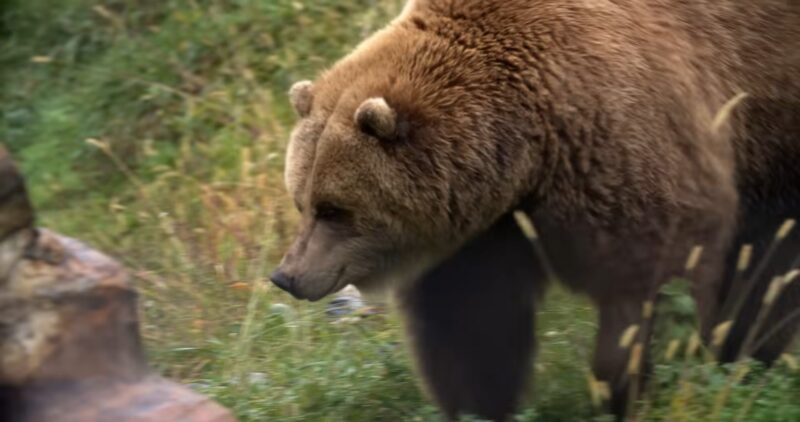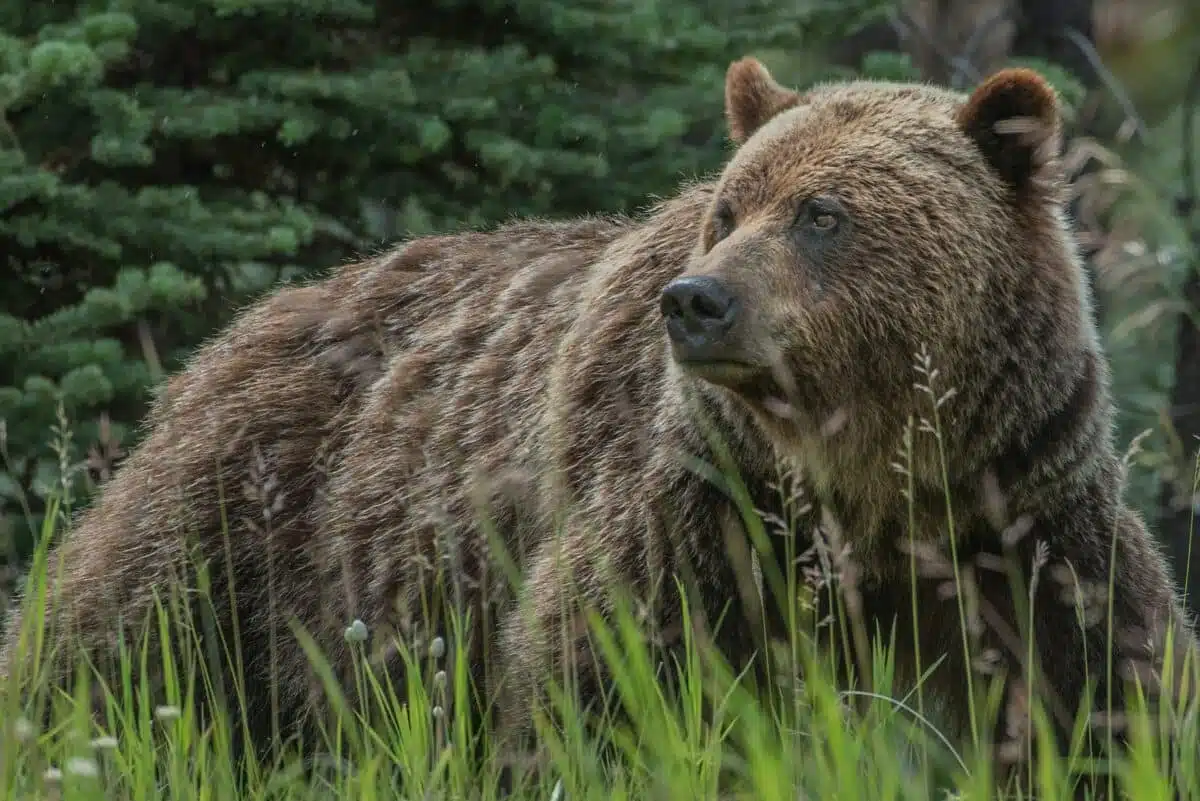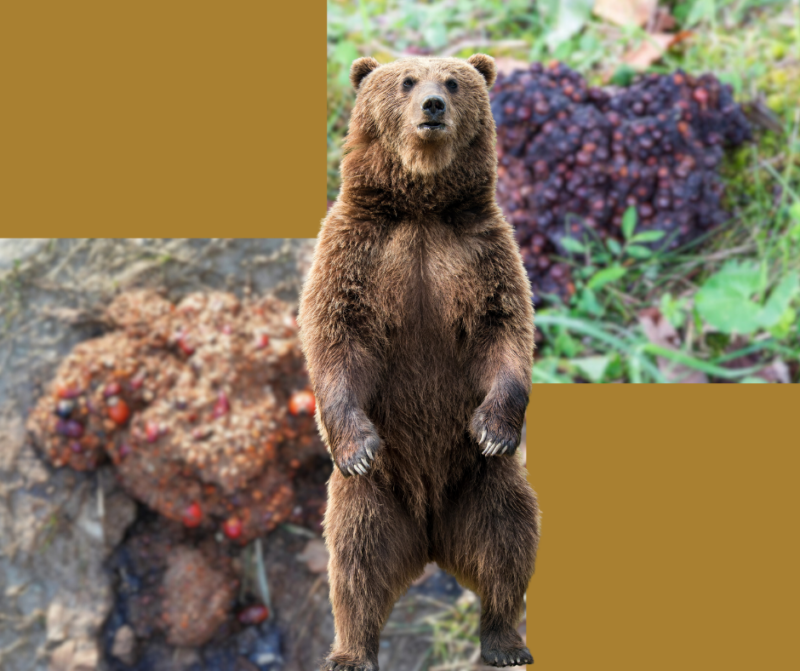Howdy, folks! Welcome to our wild and wonderful journey into the world of bears – but not just any part, we’re talking about bear scat. Now, I know what you’re thinking, “Scat? Like that fast-paced, improvised jazz singing?” Well, hold onto your hats, because we’re not talking about music here. We’re talking about something a bit more… natural.
You might be scratching your head, wondering, “Why should I care about bear droppings?” Well, let me tell you, it’s not just for the sake of having a unique conversation piece at the next neighborhood potluck. Understanding their droppings is like having a secret decoder ring to the life of these beasts. It tells us about their diets, their travels, and their role in the grand scheme of the ecosystem. Plus, it’s a surefire sign that our furry friends have been ambling about.
So, strap on your boots and grab your binoculars, because we’re about to embark on an adventure that’s as enlightening as it is weird. By the end of this, you’ll be a bona fide bear scat expert, able to identify it, understand its significance, and know just what to do if you come across it on your next hike. Ready? Let’s hit the trail!
Understanding Bears

Before we dive right into the nitty-gritty of bear scat, let’s take a moment to appreciate the stars of our show – the bears themselves. These magnificent beasts are more than just the stars of storybooks and nature documentaries. They’re an integral part of the ecosystems they inhabit, playing roles as diverse as their species.
Found all over the world, from the icy landscapes of the Arctic, where the mighty polar bears roam, to the dense forests of North America, home to the black and grizzly bears. And let’s not forget the Asian continent, where the pandas munch on bamboo and the sun bears climb trees.
Each species has its unique behaviors and diets, which, as we’ll see later, directly influence what their scat looks like. For instance, grizzlies are omnivores with a diet that changes with the seasons, including berries, fish, and small mammals. On the other hand, the giant panda’s diet is almost exclusively bamboo.
Understanding these differences is key to understanding scat. It’s like piecing together a puzzle – each bit of information brings us closer to seeing the full picture. So, as we venture further into the world of bear scat, keep in mind the diversity and complexity of these incredible creatures. After all, every pile of scat tells a story, and each story adds to our understanding and appreciation of bears. So, let’s turn the page and start unraveling these tales, shall we?
Understanding Scat

Now that we’ve gotten to know our bear friends a bit better, let’s shift our focus to the topic at hand – scat. You might be thinking, “What’s there to understand? It’s just poop!” But in the world of wildlife research and tracking, scat is a goldmine of information.
Scatology, the scientific study of scat, has been around for quite some time. It’s like reading an open book about an animal’s life. From a single sample, we can learn about an animal’s diet, health, and even its stress levels. For us wildlife enthusiasts, it’s like getting a sneak peek into the daily life of our furry friends.
Depending on what our furry friends have been munching on, their scat can vary in size, shape, color, and even smell. It’s a bit like detective work, piecing together clues to figure out what our friend has been up to.
So, as we navigate the world of bear scat, remember, we’re not just looking at poop. We’re uncovering the secret life of wild creatures, one dropping at a time.
Ready to play detective? Let’s get to it!
Characteristics and Variations of Bear Scat

Alright, folks, let’s get up close and personal with the fascinating world of bear scat. We’re going to break down the general characteristics and how they can vary based on diet and species.
- Size: You’re out on a hike and stumble upon a small pile of scat, no bigger than a pebble. Then, on another day, you find a heftier pile. What gives? Well, the size can be a telltale sign of the bear’s size and the quantity and type of food it’s been consuming. After a feast, they might leave behind a larger pile of scat. Conversely, if food has been scarce, the sample might be smaller.
- Shape: Now, let’s talk shape. Sometimes tubular, other times it’s loose and ploppy. This can be influenced by the diet and hydration levels. Imagine a bear that’s well-hydrated and has been feasting on a lot of meat or soft fruits – it might leave behind looser scat. On the flip side, one that’s been munching on a lot of roughage like plant stems might produce more solid, tubular.
- Color: The color can be like a painter’s palette, ranging from black to brown to green. This is largely influenced by the diet. Picture a bear that’s been feasting on berries – the scat might be reddish or purple due to the pigments in the berries. Now, imagine one that’s been dining on fish or other animals – the scat might be lighter, even white at times due to the bones and fur. And green? That can indicate that the bear has been eating a lot of grasses and leaves.
- Texture: The texture can be a treasure trove of information about what the bear has been eating. Full of seeds and berry skins? Theyve been enjoying a fruit buffet. If it contains fur or bones, it’s a clear sign that the furball has been dining on some meat.
- Variations Between Species: Each species of bear marches to the beat of its own drum, with unique diets and habits reflected in their scat. For instance, black bears might have scat that changes in size, shape, color, and texture throughout the year, reflecting their diverse diet. Grizzly bears, being larger, might leave behind larger scat. And polar bears, with a diet rich in fatty seals, might have scat that’s lighter in color.
Remember, each pile of scat is like a chapter in a bear’s life story. By understanding these characteristics, we can read these chapters and gain a deeper appreciation for these magnificent creatures. For example, a research titled “Efficiency of scat-analysis lab procedures for bear dietary studies” highlighted the importance of scat analysis in understanding bear food habits. Another study, “Isotopic and gross fecal analysis of American black bear scat”, used isotopic and gross fecal analysis of bear scat to gain insights into the diet of American black bears.
Comparisons and Ecological Impact
Now that we’ve got a handle on the ins and outs our furballs scat, let’s take a step back and look at the bigger picture. How do these dropping compare to that of other animals? And what role does it play in the grand scheme of the ecosystem?
- Comparing Bear Scat to Other Animals: If you’re out in the wild, you might come across scat from a variety of animals. So, how do you know if it’s from a bear or, say, a wolf or a moose? Well, size and content are your best clues. Bear is generally larger than that of most other animals, and its content can be quite varied, reflecting the bear’s omnivorous diet. Wolf, on the other hand, will often contain fur and bone fragments, while moose typically looks like small, round pellets.
- Ecological Influence of Bear Scat: Scat plays a crucial role in the ecosystem. It’s not just waste; it’s a vehicle for seed dispersal and nutrient cycling. When a bear feasts on berries, it’s not just enjoying a meal; it’s also setting the stage for new plants to grow. The seeds pass through the digestive system and are deposited far from the parent plant, often in a nutrient-rich pile of scat that helps them grow. In this way, bears contribute to the health and diversity of their habitats.
So, as we continue our journey into the world of bear scat, remember, it’s not just about identifying poop. It’s about understanding the interconnectedness of nature and appreciating the role each creature plays in maintaining the balance. Ready to delve deeper? Let’s go!
Safety Measures and Ethical Considerations
Alright, folks, we’ve learned a lot about bear scat and what it can tell us about our furry friends. But it’s not just about knowledge; it’s also about responsibility. When we’re out in the wild, it’s crucial to remember that we’re guests in the home of these magnificent creatures. So, let’s talk about safety measures and ethical considerations.
- Safety Measures: If you come across bear scat on your adventures, it’s a clear sign that a bear is nearby. It’s important to remember to give bears their space. Don’t approach it too closely, and certainly don’t touch it. It’s best to observe from a distance. If you see fresh droppings, it’s a good idea to leave the area, as the bear might still be close by.
- Ethical Considerations: As wildlife enthusiasts, it’s our responsibility to respect the animals we observe and their habitats. That means not disturbing the scat or the area around it. Remember, that scat plays a role in the ecosystem, and disturbing it can have unintended consequences.
- Legal Implications: In many places, it’s illegal to interfere with wildlife and their habitats. This can include disturbing or removing scat. So, it’s not just about respect; it’s also about following the law.
As we continue our journey into the world of bear scat, let’s remember to tread lightly and act responsibly. After all, our goal is to observe and learn, not to interfere. Ready to wrap up our adventure?
FAQ
What can bear scat tell us about bear populations?
It can provide valuable information about populations in a given area. By analyzing the DNA in scat samples, researchers can estimate the size of the population and track individuals over time.
Can bear scat tell us anything about health?
Yes, it can provide insights into a bear’s health. For example, the presence of certain parasites or abnormalities in the scat can indicate potential health issues.
How can researchers tell the difference between the scat of different bear species?
The diet of different bear species can influence the appearance of their scat. For example, a panda might contain a lot of undigested bamboo, while a grizzly might contain fish bones or berry seeds.
What should I do if I find bear scat near my campsite?
If you find scat near your campsite, it’s a sign that a bear is nearby. It’s recommended to clean up any food or garbage that might attract bears and consider moving your campsite to a safer location.
Conclusion
Well, folks, we’ve journeyed far and wide into the world of bear scat, uncovering its secrets and learning about its importance in the grand scheme of things. We’ve seen how each pile of scat tells a story about the fella that left it behind, giving us insights into its diet, its habits, and its role in the ecosystem. We’ve also learned how to distinguish bear scat from that of other animals and understood the importance of respecting wildlife and their habitats.
But our journey doesn’t end here. Each time we step into the wilderness, we have the opportunity to observe, to learn, and to appreciate the incredible creatures that share our world. So, the next time you come across a pile of bear scat, take a moment to observe it. Think about the furball that left it behind, what it might have been eating, where it might be going. Remember, you’re not just looking at poop; you’re reading a chapter in the life of a bear.
As we part ways, let’s carry with us not just the knowledge we’ve gained, but also a renewed sense of respect and admiration for these magnificent creatures. After all, understanding bear scat is just one part of understanding our fluffly friends, and understanding bears is just one part of understanding the beautiful, complex, and interconnected world of nature. So, until our next adventure, stay curious, stay respectful, and keep exploring!







